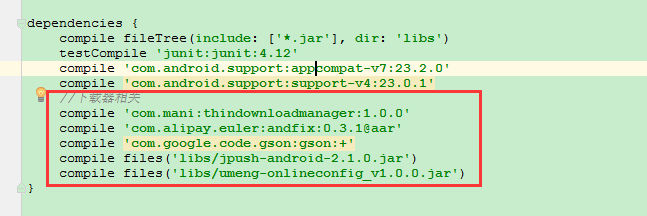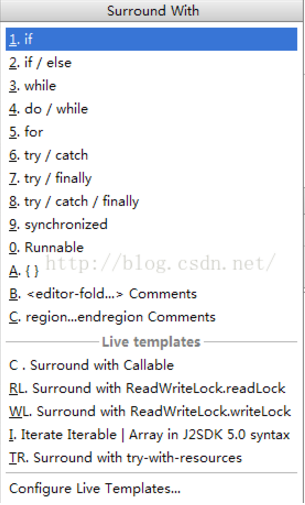編輯:關於Android編程
轉載請注明出處:http://blog.csdn.net/singwhatiwanna/article/details/23387079 (來自singwhatiwanna的csdn博客)
我們知道,在activity內部訪問資源(字符串,圖片等)是很簡單的,只要getResources然後就可以得到Resources對象,有了Resources對象就可以訪問各種資源了,這很簡單,不過本文不是介紹這個的,本文主要介紹在這套邏輯之下的資源加載機制
很明確,不同的Context得到的都是同一份資源。這是很好理解的,請看下面的分析
得到資源的方式為context.getResources,而真正的實現位於ContextImpl中的getResources方法,在ContextImpl中有一個成員 private Resources mResources,它就是getResources方法返回的結果,mResources的賦值代碼為:
mResources = mResourcesManager.getTopLevelResources(mPackageInfo.getResDir(),
Display.DEFAULT_DISPLAY, null, compatInfo, activityToken);
下面看一下ResourcesManager的getTopLevelResources方法,這個方法的思想是這樣的:在ResourcesManager中,所有的資源對象都被存儲在ArrayMap中,首先根據當前的請求參數去查找資源,如果找到了就返回,否則就創建一個資源對象放到ArrayMap中。有一點需要說明的是為什麼會有多個資源對象,原因很簡單,因為res下可能存在多個適配不同設備、不同分辨率、不同系統版本的目錄,按照android系統的設計,不同設備在訪問同一個應用的時候訪問的資源可以不同,比如drawable-hdpi和drawable-xhdpi就是典型的例子。
public Resources getTopLevelResources(String resDir, int displayId,
Configuration overrideConfiguration, CompatibilityInfo compatInfo, IBinder token) {
final float scale = compatInfo.applicationScale;
ResourcesKey key = new ResourcesKey(resDir, displayId, overrideConfiguration, scale,
token);
Resources r;
synchronized (this) {
// Resources is app scale dependent.
if (false) {
Slog.w(TAG, "getTopLevelResources: " + resDir + " / " + scale);
}
WeakReference wr = mActiveResources.get(key);
r = wr != null ? wr.get() : null;
//if (r != null) Slog.i(TAG, "isUpToDate " + resDir + ": " + r.getAssets().isUpToDate());
if (r != null && r.getAssets().isUpToDate()) {
if (false) {
Slog.w(TAG, "Returning cached resources " + r + " " + resDir
+ ": appScale=" + r.getCompatibilityInfo().applicationScale);
}
return r;
}
}
//if (r != null) {
// Slog.w(TAG, "Throwing away out-of-date resources!!!! "
// + r + " " + resDir);
//}
AssetManager assets = new AssetManager();
if (assets.addAssetPath(resDir) == 0) {
return null;
}
//Slog.i(TAG, "Resource: key=" + key + ", display metrics=" + metrics);
DisplayMetrics dm = getDisplayMetricsLocked(displayId);
Configuration config;
boolean isDefaultDisplay = (displayId == Display.DEFAULT_DISPLAY);
final boolean hasOverrideConfig = key.hasOverrideConfiguration();
if (!isDefaultDisplay || hasOverrideConfig) {
config = new Configuration(getConfiguration());
if (!isDefaultDisplay) {
applyNonDefaultDisplayMetricsToConfigurationLocked(dm, config);
}
if (hasOverrideConfig) {
config.updateFrom(key.mOverrideConfiguration);
}
} else {
config = getConfiguration();
}
r = new Resources(assets, dm, config, compatInfo, token);
if (false) {
Slog.i(TAG, "Created app resources " + resDir + " " + r + ": "
+ r.getConfiguration() + " appScale="
+ r.getCompatibilityInfo().applicationScale);
}
synchronized (this) {
WeakReference wr = mActiveResources.get(key);
Resources existing = wr != null ? wr.get() : null;
if (existing != null && existing.getAssets().isUpToDate()) {
// Someone else already created the resources while we were
// unlocked; go ahead and use theirs.
r.getAssets().close();
return existing;
}
// XXX need to remove entries when weak references go away
mActiveResources.put(key, new WeakReference(r));
return r;
}
} 根據上述代碼中資源的請求機制,再加上ResourcesManager采用單例模式,這樣就保證了不同的ContextImpl訪問的是同一套資源,注意,這裡說的同一套資源未必是同一個資源,因為資源可能位於不同的目錄,但它一定是我們的應用的資源,或許這樣來描述更准確,在設備參數和顯示參數不變的情況下,不同的ContextImpl訪問到的是同一份資源。設備參數不變是指手機的屏幕和android版本不變,顯示參數不變是指手機的分辨率和橫豎屏狀態。也就是說,盡管Application、Activity、Service都有自己的ContextImpl,並且每個ContextImpl都有自己的mResources成員,但是由於它們的mResources成員都來自於唯一的ResourcesManager實例,所以它們看似不同的mResources其實都指向的是同一塊內存(C語言的概念),因此,它們的mResources都是同一個對象(在設備參數和顯示參數不變的情況下)。在橫豎屏切換的情況下且應用中為橫豎屏狀態提供了不同的資源,處在橫屏狀態下的ContextImpl和處在豎屏狀態下的ContextImpl訪問的資源不是同一個資源對象。 public static ResourcesManager getInstance() {
synchronized (ResourcesManager.class) {
if (sResourcesManager == null) {
sResourcesManager = new ResourcesManager();
}
return sResourcesManager;
}
}通過閱讀Resources類的源碼可以知道,Resources對資源的訪問實際上是通過AssetManager來實現的,那麼如何創建一個Resources對象呢,有人會問,我為什麼要去創建一個Resources對象呢,直接getResources不就可以了嗎?我要說的是在某些特殊情況下你的確需要去創建一個資源對象,比如動態加載apk。很簡單,首先看一下它的幾個構造方法:
/**
* Create a new Resources object on top of an existing set of assets in an
* AssetManager.
*
* @param assets Previously created AssetManager.
* @param metrics Current display metrics to consider when
* selecting/computing resource values.
* @param config Desired device configuration to consider when
* selecting/computing resource values (optional).
*/
public Resources(AssetManager assets, DisplayMetrics metrics, Configuration config) {
this(assets, metrics, config, CompatibilityInfo.DEFAULT_COMPATIBILITY_INFO, null);
}
/**
* Creates a new Resources object with CompatibilityInfo.
*
* @param assets Previously created AssetManager.
* @param metrics Current display metrics to consider when
* selecting/computing resource values.
* @param config Desired device configuration to consider when
* selecting/computing resource values (optional).
* @param compatInfo this resource's compatibility info. Must not be null.
* @param token The Activity token for determining stack affiliation. Usually null.
* @hide
*/
public Resources(AssetManager assets, DisplayMetrics metrics, Configuration config,
CompatibilityInfo compatInfo, IBinder token) {
mAssets = assets;
mMetrics.setToDefaults();
if (compatInfo != null) {
mCompatibilityInfo = compatInfo;
}
mToken = new WeakReference(token);
updateConfiguration(config, metrics);
assets.ensureStringBlocks();
} 除了這兩個構造方法還有一個私有的無參方法,由於是私有的,所以沒法訪問。上面兩個構造方法,從簡單起見,我們應該采用第一個public Resources(AssetManager assets, DisplayMetrics metrics, Configuration config)
它接受3個參數,第一個是AssetManager,後面兩個是和設備相關的配置參數,我們可以直接用當前應用的配置就好,所以,問題的關鍵在於如何創建AssetManager,下面請看分析,為了創建一個我們自己的AssetManager,我們先去看看系統是怎麼創建的。還記得getResources的底層實現嗎,在ResourcesManager的getTopLevelResources方法中有這麼兩句:
AssetManager assets = new AssetManager();
if (assets.addAssetPath(resDir) == 0) {
return null;
}這兩句就是創建一個AssetManager對象,後面會用這個對象來創建Resources對象,ok,AssetManager就是這麼創建的,assets.addAssetPath(resDir)這句話的意思是把資源目錄裡的資源都加載到AssetManager對象中,具體的實現在jni中,大家感興趣自己去了解下。而資源目錄就是我們的res目錄,當然resDir可以是一個目錄也可以是一個zip文件。有沒有想過,如果我們把一個未安裝的apk的路徑傳給這個方法,那麼apk中的資源是不是就被加載到AssetManager對象裡面了呢?事實證明,的確是這樣,具體情況可以參見Android apk動態加載機制的研究(二):資源加載和activity生命周期管理這篇文章。addAssetPath方法的定義如下,注意到它的注釋裡面有一個{@hide}關鍵字,這意味著即使它是public的,但是外界仍然無法訪問它,因為android sdk導出的時候會自動忽略隱藏的api,因此只能通過反射來調用。
/**
* Add an additional set of assets to the asset manager. This can be
* either a directory or ZIP file. Not for use by applications. Returns
* the cookie of the added asset, or 0 on failure.
* {@hide}
*/
public final int addAssetPath(String path) {
int res = addAssetPathNative(path);
return res;
}有了AssetManager對象後,我們就可以創建自己的Resources對象了,代碼如下:
try {
AssetManager assetManager = AssetManager.class.newInstance();
Method addAssetPath = assetManager.getClass().getMethod("addAssetPath", String.class);
addAssetPath.invoke(assetManager, mDexPath);
mAssetManager = assetManager;
} catch (Exception e) {
e.printStackTrace();
}
Resources currentRes = this.getResources();
mResources = new Resources(mAssetManager, currentRes.getDisplayMetrics(),
currentRes.getConfiguration());有了Resources對象,我們就可以通過Resources對象來訪問裡面的各種資源了,通過這種方法,我們可以完成一些特殊的功能,比如換膚、換語言包、動態加載apk等,歡迎大家交流。
 NFC 不僅配對這麼簡單
NFC 不僅配對這麼簡單
雖然NFC並非什麼新技術,但它至今仍僅是中高端手機的專利。令人遺憾的是,很多用戶對NFC的態度卻是“永不錄用”,一方面是擔心它的高耗
 Android熱修復實踐應用--AndFix
Android熱修復實踐應用--AndFix
實現的原理這裡說的不是熱修復怎麼實現修bug的原理,這裡說的是怎麼使用AndFix。如果你想了解更多的andFix實現原理,你可以參考下面的文章:https://gith
 RecyclerView綜合解析
RecyclerView綜合解析
什麼是RecyclerView?RecyclerView其實就是一個在5.0推出的控件,可以用它來代替ListView和GridView,從這一點也能看出來它的特性和Li
 Android studio中快速try catch的快捷鍵
Android studio中快速try catch的快捷鍵
選擇要包裹的代碼塊,然後按下ctrl + alt + t